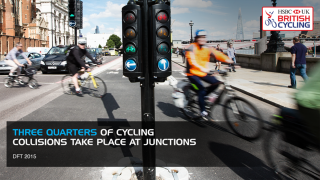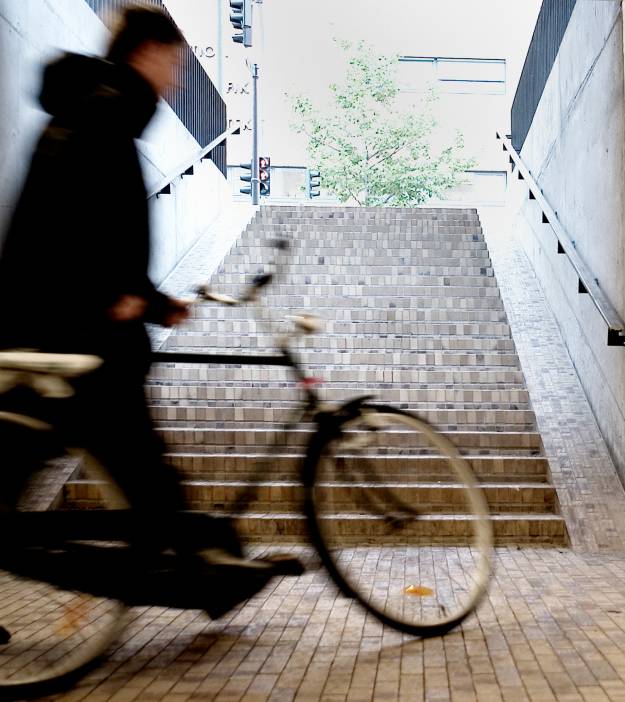Transport planning consultant Adrian Lord argues that a change in the wording of the Highway Code would help deliver better cycling infrastructure.
The Highway Code provides the foundation for road behaviour and highway designers look to it to help design roads and junctions. The reason why cycle lanes disappear at junctions is because there is no clear rule on giving way so engineers protect themselves by not providing anything.
British Cycling’s petition calls for a change that would clarify priorities around junctions. We are calling for a universal rule that when turning at a junction you would always give way to people going ahead or crossing that junction, including people cycling and walking.
This would make them simpler, safer and more efficient for everyone. This change would consolidate and clarify existing rules and has already been shown to be effective at increasing road safety for people walking and cycling in other countries.
It will give local highway authorities greater confidence to install continental-style cycle lanes across the UK, and reduce risks at existing junctions.

Why many people think cycle lanes don’t work
Like many experienced cyclists, I spend a good deal of time riding along the road next to ‘cycling infrastructure’ but not on it.
Due to the deficiencies in the Highway Code, cycle lanes are frequently less convenient than using the main road so will often only ever be used by beginners.
These cycle lanes often involve stopping at every side road, and disappear at junctions just when you need the most protection.
They can be inconvenient and uncomfortable as they require you to slow or stop, look behind for cars turning, look ahead for cars turning in from your right, look into the side road for cars approaching.

Changing the Highway Code will make cycling easier
It is estimated that the human effort required to stop moving and then start again on a bicycle is equivalent to adding on over 200 m (almost a lap of Manchester Velodrome) to the journey. Stop at five side roads or more and you’ve added the equivalent of 1 km and several minutes to a journey.
The average cycle trip in the UK is just 4.2 km, so this is a significant additional effort on top of the normal stopping and starting required in traffic. By changing the Highway Code to mean less stopping and giving way it will help cut journey times for cyclists.
Better cycle lanes for all
Anybody who has cycled in the Netherlands or Denmark will have experienced that strange (to British cyclists) feeling of being respected as a road user with the same status as other traffic, even when using cycle facilities.
Physical infrastructure that indicates priority on the ground is reinforced by law and custom, so that drivers and cyclists habitually check before turning across the paths of others.
The cycle lanes are also used by all, from experienced to novice cyclists because not only do they feel safe they are also quicker than cycling on the road.
Designers already have various options to provide priority to pedestrians and cyclists crossing side roads using various give-way signs, crossings and other physical features such as speed humps depending on the exact circumstances.
They are reluctant to deploy these however, for the simple reason that drivers may not ‘give way’ as intended. This is despite 14 separate existing Highway Code rules that are meant to deter drivers from overtaking, cutting in and running into pedestrians and cyclists crossing side road junctions.
This simple change in the Highway Code would be the first step of embedding this custom in the UK and help to deliver better cycling infrastructure.













